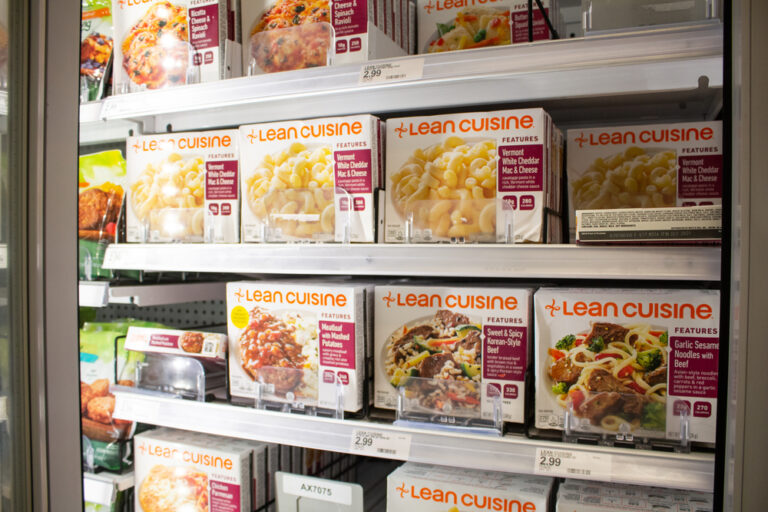Whether you decide to shop in bulk at a warehouse club, visit the local grocery store many times a week for fresh ingredients, or simply pick up whatever you’re in the mood for on the way home from work, one thing is for sure: you need to buy some food to keep your household running. However, how much you spend on groceries can widely differ, creating a unique budget for every home. This figure is influenced by a complex web of factors, including your specific diet (such as vegan, gluten-free, or organic), where you live and the associated cost of living, the stores you frequent, your personal budget constraints, and, of course, the size and ages of the people in your household.
On average, it’s a consistent trend that households that rely on lower incomes spend fewer total dollars on food throughout the year. At the same time, and perhaps more importantly, a much larger proportion of their income goes directly toward groceries, which can put a significant strain on their financial stability. In 2022, families who registered in the lowest income quintile spent an average of $5,090 on food, which equaled a substantial 31% of their total pre-tax income. This often means making difficult choices between food and other essential expenses like housing, healthcare, and transportation.
In the meantime, the highest-earning households spent way more than three times as much in absolute dollars—an average of $15,713 on food for the year. However, this impressive figure represented only 8% of their income, according to detailed consumer expenditure data from the U.S. Department of Agriculture. This stark contrast highlights the significant disparity in food security and financial flexibility between different income brackets, where one group feels the impact of every price increase, while the other can absorb these costs with relative ease.

How much should you spend on groceries on a monthly basis?
The total cost of your groceries might vary significantly depending on the size of your household and who is in it, as teenagers notoriously eat more than toddlers. To help people budget, the USDA categorizes the average grocery costs depending on the types of spenders into four distinct plans: thrifty, low-cost, moderate, and liberal. The thrifty plan represents a nutritious, minimal-cost diet, while the liberal plan allows for more convenience foods, premium ingredients, and less cooking from scratch.
For instance, a family with a mother, father, and two kids between the ages of 9 and 11 would have to pay between $1,074 on the low-cost plan and up to $1,635 a month on the liberal plan for groceries. A younger couple in their 30s with no children might see their monthly costs range from $579 (low-cost) to $1,118 (liberal). The prices that are shown here and below are based on the official USDA Food Plans from October 2023 and serve as a useful benchmark.
Three spending plans: USDA grocery costs for single adults
Monthly spending averages for individuals could also differ substantially depending on their age, gender, and personal budget. For males following low-cost and moderate-cost grocery budgets, spending typically maxes out among teenagers between the ages of 14 and 19, driven by rapid growth and high metabolism. Interestingly, among those with the highest, most liberal budgets, the biggest spenders are men in the 20 to 50 age group, likely due to factors like higher incomes and entertaining. For example, a male aged 20-50 could spend anywhere from $326 (low-cost) to $646 (liberal) per month.
For single women, the spending patterns are similar, though the overall costs are slightly lower on average. A woman aged 20-50 on a low-cost plan might spend around $288 per month, while her counterpart on a moderate plan would spend about $360. On the liberal plan, her monthly grocery bill could reach $568. These figures underscore how individual circumstances, even for a single person, can dramatically alter a food budget.
How to save money without sacrificing nutrition
Trust me, eating healthy and delicious meals won’t automatically drain your bank account. In fact, strategic shopping can often lead to a more nutritious diet for less money. Two of the most important key principles to embrace include:
- Shop for vegetables and fruits that are in season, as those are usually much cheaper, more flavorful, and at their peak nutritional value.
- Stock up on various nutritious canned and dry foods such as beans, lentils, rice, oats, pasta, and canned vegetables. These pantry staples have a long shelf life and can form the base of many inexpensive meals.
Here’s how to shop more cost-effectively and make your grocery budget stretch further without compromising on quality:
Check your cupboards before shopping
The most affordable food is the food you already own. Start by shopping in your own cabinets, refrigerator, and freezer right before you even think about going to the store or browsing online for delivery. Take a quick inventory of what you have on hand. You can use the food you have before it expires, which reduces waste and prevents you from spending more money on new food you don’t immediately need. Consider keeping a small whiteboard on your fridge or using a notes app on your phone to track what needs to be used up first.
Find out what’s in season and what’s on sale
Seasonal fruits and vegetables are generally much cheaper because they are plentiful, requiring less energy and cost to grow and transport. This is why you’ll see berries for a steal in the summer but at a premium in the winter. They are also likely to be significantly fresher, more delicious, and more nutrient-dense. Visiting local farmers’ markets can be a great way to find the best seasonal produce. Here’s a rough schedule for common fruits and veggies in North America:
Spring
- apples
- apricots
- asparagus
- avocados
- bananas
- broccoli
- cabbage
- carrots
- lettuce
- mushrooms
- peas
- radishes
- rhubarb
- spinach
Summer
- bell peppers
- blueberries
- cherries
- corn
- cucumbers
- eggplant
- garlic
- green beans
- honeydew melon
- lima beans
- peaches
- strawberries
- watermelon
- zucchini
Fall
- apples
- brussels sprouts
- cauliflower
- cranberries
- grapes
- pears
- peas
- pumpkin
- raspberries
- spinach
- sweet potatoes and yams
- swiss chard
- turnips
- winter squash
Winter
- beets
- cabbage
- grapefruit
- kale
- leeks
- lemons
- limes
- onions
- oranges
- parsnips
- pears
- potatoes
- rutabagas
- tangerines
Buy in bulk
Buying in bulk is definitely cheaper than buying smaller quantities, but it requires a smart approach. Probably the most accurate way in which you can compare prices is to check the unit cost, not the sticker price. Grocery shelves generally have two price tags: the retail price per container, which comes in larger print, and the unit price (e.g., price per ounce or per pound), which is oftentimes in smaller print right beneath the retail price. This is your key to true value.
The unit price shows you exactly how much you are paying by weight or volume, rather than the container size. Unit costs will point you toward how much you need to spend on larger versus smaller quantities, helping you decide if the “family size” is truly a better deal. However, be cautious: buying in bulk is only a saving if you use the food before it spoils. Stick to non-perishables like rice, pasta, canned goods, and paper products unless you have a clear plan for perishables.

Make a proper meal plan
Weekly meal plans will help you dramatically reduce additional costs because you will be able to buy in bulk with confidence, use the same ingredients in many different dishes for multiple meals, and also avoid the dreaded impulse spending that happens when you wander the aisles aimlessly. A great strategy is to plan meals around sale items. For instance, if chicken breast is on sale, you can plan for grilled chicken salads, chicken tacos, and chicken pasta for the week. Postmates, DoorDash, and any other meal delivery services are ideal when you’re hungry and unprepared, but they’re your biggest enemies when you are trying to cut costs and stick to a budget.
Eat before shopping
Never shop on an empty stomach. Hunger will often lead to overspending and poor choices. Studies have repeatedly shown that people who decide to shop on an empty stomach spend way more not only on groceries—especially high-calorie, processed, and ready-to-eat items—but also on non-food items, like magazines, paper clips, and hair supplies. Your brain in a hungry state is focused on immediate gratification. To combat this, schedule your shopping trips right after a meal or a substantial snack so you can keep your spending in check and make choices with a clear, satisfied mind.
Join a grocery store’s rewards programs
The majority of large and even mid-sized grocery stores have a free-to-join rewards or loyalty program that gifts members all kinds of savings. These programs often provide access to exclusive sale prices, digital coupons you can load directly to your card, and personalized deals based on your shopping history. Some even have fuel points programs where your grocery spending earns you a discount at the gas pump. If you’re not quite sure if your store has such a program, simply ask a cashier or manager the next time you go there. You could be surprised to find a wealth of free savings by simply signing up with your phone number or email address.
Clip the coupons
The classic money-saving technique is still highly effective, though it has evolved. Before you buy any kind of food, try to find out if there are coupons for it online, through the store’s app, or in the traditional in-store flyers. Many manufacturers offer printable coupons on their websites. Furthermore, you might want to check to see if your store has a price match program, where they will match a competitor’s lower price on an identical item. This requires a little homework, like scanning weekly ads online, but the savings can be substantial.
Use cash-back or even reward credit cards
There are plenty of credit card companies that come with significant perks and rewards specifically for grocery spending, often offering 2% to 6% cash back on these purchases. If you’re looking for ways to boost your earnings, just choose a credit card that has benefits you can actually use (like cash back, airline miles, or statement credits). Be sure to pay your balance in full every month, as carrying a balance and incurring interest charges will quickly negate any rewards you earn. When used responsibly, a good rewards card is like getting an extra discount on every grocery trip.
If you want to read similar articles, we recommend you: 12 Easy Ways To Receive Gift Cards for Free














